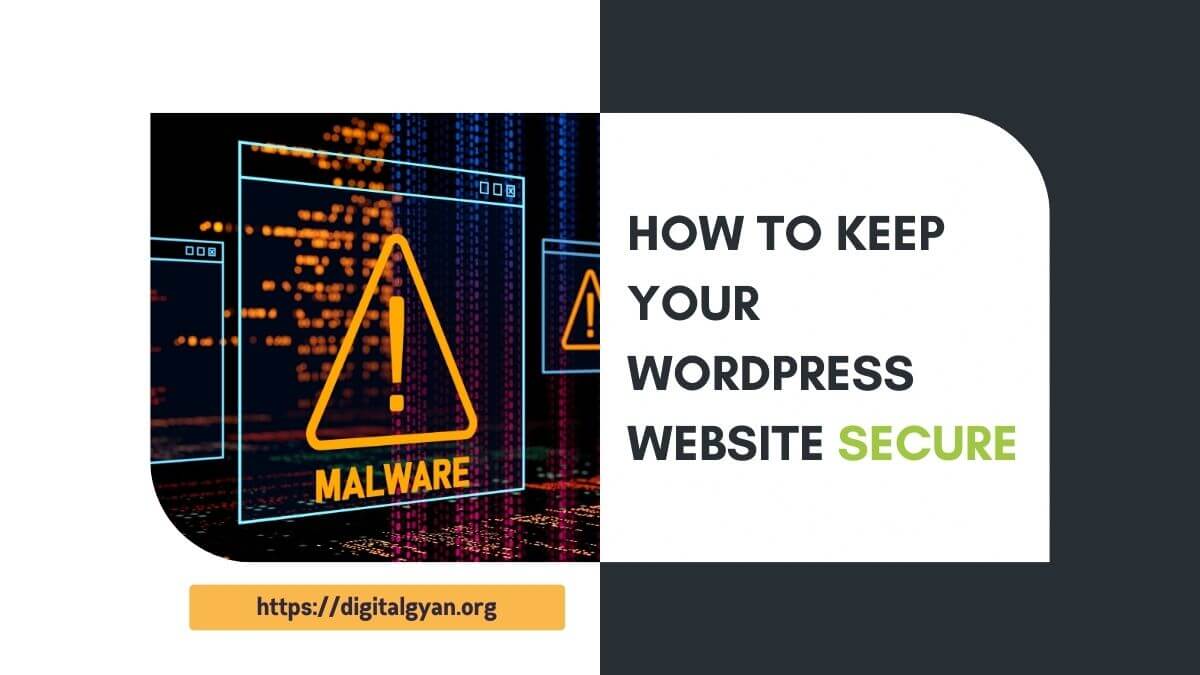How to Secure Your WordPress Site – The Complete Guide
WordPress is one of the most popular website platforms in the world, powering over 40% of all websites. However, its widespread use also makes it a prime target for security threats.
In this blog, we will explore the various security concerns surrounding WordPress and discuss best practices for keeping your WordPress site safe and secure.
Tips to Secure Your WordPress Site
While there are several actions you can take to secure your WordPress site, we’ve put together a list of the most effective methods in this article:
1. Use a strong password
This may seem like an obvious one, but using a strong password is crucial to the security of your WordPress site. A strong password is at least 12 characters long and includes a mix of upper and lowercase letters, numbers, and symbols.
If you’re using a password that’s easy to guess, you’re putting your WordPress site at risk. Hackers use sophisticated tools that can quickly crack weak passwords.
2. Keep your WordPress site up-to-date
One of the best ways to keep your WordPress site secure is to make sure it’s always up to date. WordPress releases new versions of their software regularly, and each new release contains security fixes.
If you’re not running the latest version of WordPress, you’re missing out on important security updates that could keep your site safe from hackers.
3. Use a security plugin
There are several great security plug ins available for WordPress, and we recommend using one to help secure your site.
There are various security plugins available, each with its own set of features. Some popular options include Wordfence, Sucuri Security, iThemes Security, and All in One WP Security & Firewall. These plugins provide functionalities such as firewall protection, malware scanning, login security, and more. When choosing a security plugin for your WordPress site, it’s important to consider factors such as ease of use, compatibility with other plugins, and regular updates to ensure optimal security measures.
4. Host your WordPress site securely
The security of your WordPress site also depends on your web hosting provider. Make sure you choose a reputable and secure web host for your WordPress site.
A good web host will have security measures in place to help protect your site from hackers, including firewalls and regular backups.
5. Don’t use “admin” as your username
Using “admin” as your WordPress username is a security risk. Hackers know that many WordPress users choose this username, so it’s one of the first things they’ll try when trying to gain access to a WordPress site.
If you’re using “admin” as your username, change it to something else that’s unique and difficult to guess.
6. Limit login attempts
If you’re not already doing this, you should limit the number of login attempts allowed for your WordPress site. By default, WordPress allows an unlimited number of login attempts, which gives hackers an unlimited number of chances to guess your password.
By limiting login attempts, you’re making it more difficult for hackers to gain access to your WordPress site.
7. Use HTTPS
Unlike HTTP, HTTPS encrypts the data exchanged between your browser and the website. This means that even if someone intercepts the communication, they cannot read the information, including sensitive data like passwords, credit card numbers, or personal details. This protects users from eavesdropping and man-in-the-middle attacks.
HTTPS uses digital certificates to verify the website’s identity. This ensures you’re communicating with the intended website and not a fake one designed to steal your information (phishing attack). Think of it like checking the ID of someone claiming to be your bank representative.
HTTPS guarantees that the data you send and receive hasn’t been tampered with in transit. This prevents attackers from injecting malicious code or altering information transmitted between you and the website.
8. Disable file editing
By default, WordPress allows you to edit theme and plugin files directly from the WordPress admin area. This is a security risk, as it gives hackers access to your website’s code.
If you don’t need to edit your theme or plugin files directly, disable this feature by adding the following line to your wp-config.php file:
define( ‘DISALLOW_FILE_EDIT’, true );
9. Keep backups of your WordPress site
Hackers are constantly targeting websites, and WordPress is a popular platform. If your website gets hacked, having a recent backup allows you to quickly restore it and minimise data loss.
Even without a hack, accidents happen. Accidental plugin deletions, theme incompatibilities, or even server failures can corrupt your website. Backups provide a safety nett to restore your site to a safe state.
We recommend using a WordPress backup plugin like UpdraftPlus to create regular backups of your site. Regularly test your backups to ensure they are complete and recoverable. This way, you know you can rely on them when needed.
10. Monitor your WordPress site for changes
Another important step in securing your WordPress site is regularly monitoring it for changes. If you notice any unusual activity or changes to your site, it could be a sign that your site has been hacked.
You can use a plugin like Wordfence to scan your site for changes and receive alerts if any are detected. This can help you catch a hack early and take action to fix it.
By taking these steps to secure your WordPress site, you can help protect it from hackers. Remember to keep your site up to date, use a security plugin, and backup your site regularly.

